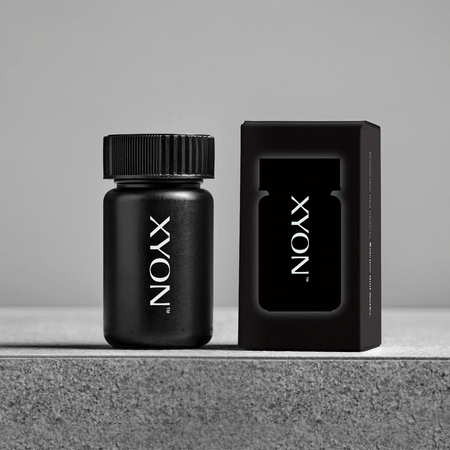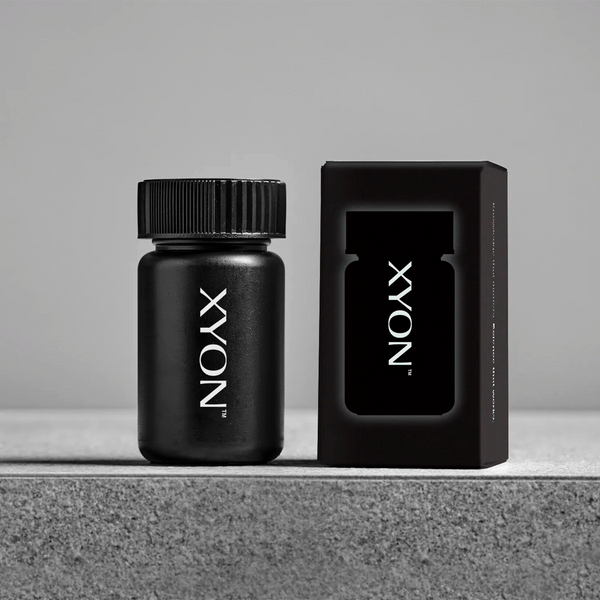Finasteride is one of the most common drugs used to treat male hair loss. It’s an example of a 5-alpha reductase inhibitor (5-ARI), which is a type of medication that blocks the activity of an enzyme called 5-alpha reductase. Finasteride prevents this enzyme from transforming testosterone into dihydrotestosterone (DHT), which is the main contributor to male pattern hair loss.
Once-daily oral dosing of finasteride has been shown to reduce blood DHT levels by about 70% (Gormley et al., 1990). This dramatic reduction in DHT levels helps stop the progression of hair follicle miniaturization, which is responsible for the tell-tale signs of male pattern baldness.
In this article, we’ll go into detail about what types of hair loss can be treated with finasteride, whether finasteride for hair loss is effective and if this effectiveness changes over time. We’ll also answer commonly asked questions about the best age to start using finasteride for hair loss and whether you have to take finasteride for the rest of your life.
Taking finasteride for hair loss: What types of hair loss does it treat?
Finasteride is approved for the treatment of androgenetic alopecia at a 1mg daily dose. It’s not used to treat other types of hair loss such as traction alopecia, scarring (cicatricial) alopecia, alopecia universalis or telogen effluvium. This is because DHT levels are not a causal factor in these other types of hair loss.
Outside of the FDA-approved 1mg oral dose, other forms of finasteride, such as topical finasteride, do exist. These can still be prescribed to patients for hair loss at custom concentrations. However, you should be aware that these custom formulations are not FDA-approved.
The 1mg oral tablet is FDA-approved to treat male androgenetic alopecia. Finasteride 5mg is also available and it's used to treat a different condition, benign prostatic hyperplasia (BPH). In rare cases, after reviewing your hair loss, a doctor could prescribe you the 5mg tablet with additional instructions on how to divide each pill into smaller doses.
Our free online intake process takes only a few minutes. Get your case reviewed by a licensed physician today.


XYON offers a quick and easy way to get your finasteride prescription.
Does finasteride regrow hair? How effective is finasteride for hair loss?
Finasteride has been shown in numerous clinical studies to be effective for treating male pattern hair loss and re-growing hair. These studies include men from all age ranges experiencing various degrees of hair loss and patterns of thinning hair.
One large meta-analysis that included studies that compared oral finasteride 1mg to placebo treatments for anywhere from 6 to 48 months showed a 9-24% increase in hair counts in the finasteride-treated group (Mella et al., 2010).
Two other studies that compared finasteride to placebo for up to two years found that the finasteride treatment group saw significant improvement in hair counts whereas placebo treated patients lost hair. To put this into perspective, only 1% of men taking finasteride lost hair over the treatment period vs. approximately 30% of men who were on the placebo (Kaufman, 1999).
Additionally, finasteride seems to help regrow hair in all areas of the scalp, including the vertex, anterior/mid, frontal and temporal regions. So, regardless of where you’re experiencing hair loss, whether that’s primarily along the hairline or mostly on top of your head, you should see some benefit. Finasteride has also been shown to increase hair weight, which means that you could end up with not only more hair, but thicker hair too (Price et al., 2002 and Leyden et al., 1999).
When should I start taking finasteride for hair loss?
Clinical data has shown that finasteride can benefit men across all age groups and that starting treatment as soon as you start to notice hair loss will yield the best results. There is some evidence to suggest that younger men (<41 years of age) are more likely to see the positive effects of finasteride across the entire scalp as compared to older patients, who may experience improvements localized to one area of the scalp (Olsen et al., 2011).
Does finasteride lose effectiveness over time?
Finasteride doesn’t appear to lose its efficacy over time. The longest study on finasteride use to date enrolled over 500 Japanese men with androgenetic alopecia and followed their progress over ten years. The data showed that benefits were sustained over the duration of the treatment period with no further progression of hair loss, as well as improvements in hair growth in over 99% of study participants (Yanagisawa et al., 2019).
Do I need to take finasteride for hair loss forever?
Maximal hair growth with finasteride is generally observed around 12-24 months and as long as you keep up with dosing, should be maintained thereafter. There's an intimate relationship between DHT and hair loss and DHT levels have to remain suppressed in order to halt the progression of androgenetic alopecia. If you come off finasteride, DHT levels will slowly return to their pretreatment levels and you could lose your progress in a matter of weeks.
Finasteride for hair loss: Takeaway
Finasteride is an effective treatment for androgenetic hair loss because it lowers levels of the causal hormone, DHT. Various clinical studies have shown that nearly all men can use and derive some benefit from finasteride, but that patients with early-stage hair loss may see more dramatic results. If you do choose to use finasteride for hair loss, you should know that you may have to stay on the medication indefinitely. If you have any other questions or concerns about finasteride, we recommend speaking to a doctor.




